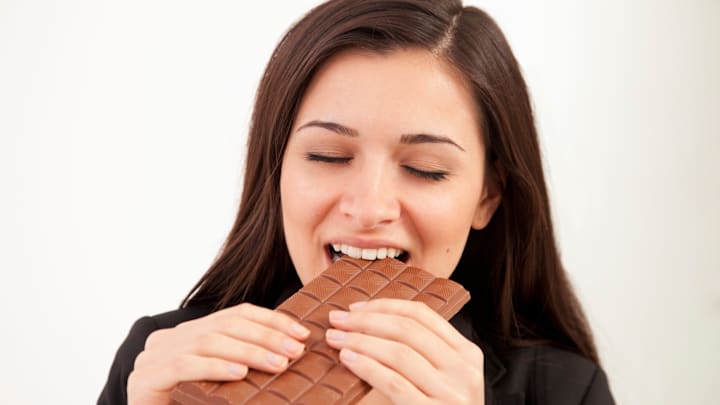Like pizza, chocolate is one of the few foods that invites (almost) universal affection. Cheap candy bars taste good; so do premium chocolate bars, chocolate cake, chocolate ice cream, and chocolate cookies. Recently, scientists at the University of Leeds wanted to find out why.
The answer? Lubrication.
In a new study published in the journal ACS Applied Materials and Interfaces, researchers examined how chocolate dissolves in the mouth—or in this case, on an artificial, 3D printed silicone tongue. As the chocolate is ingested, the fat in the substance coats the tongue, often mixing with the saliva present to create a perfect goo that we interpret as a pleasant sensation. It’s why chocolate “feels” good to eat, aside from whatever taste stimulation it provides.
To arrive at this conclusion, researchers at the university’s School of Food Science and Nutrition and the School of Mechanical Engineering relied on tribology, or the study of how surfaces interact in motion. Using 15 silicone tongues with tiny papillae and pig stomach mucosa as a stand-in for saliva, researchers observed how chocolate dissolves. Fat on the outer surface of the chocolate coated the tongues, leaving a fatty film on the silicone. Once dissolved, cocoa particles hit the tongue, offering further sensation. Fat inside the chocolate seemed to make less of a difference.
Why is that last detail important? It could be that chocolate with a lower fat content could still prove satisfying. "With the understanding of the physical mechanisms that happen as people eat chocolate, we believe that a next generation of chocolate can be developed that offers the feel and sensation of high-fat chocolate yet is a healthier choice," study co-author Dr. Siavash Soltanahmadi said in a statement. "Our research opens the possibility that manufacturers can intelligently design dark chocolate to reduce the overall fat content."
Tribology could also be used to examine the mouthfeel of butter, cheese, and other foods, with an eye on creating more health-conscious variations that are still pleasing to the tongue.
[h/t Food & Wine]
